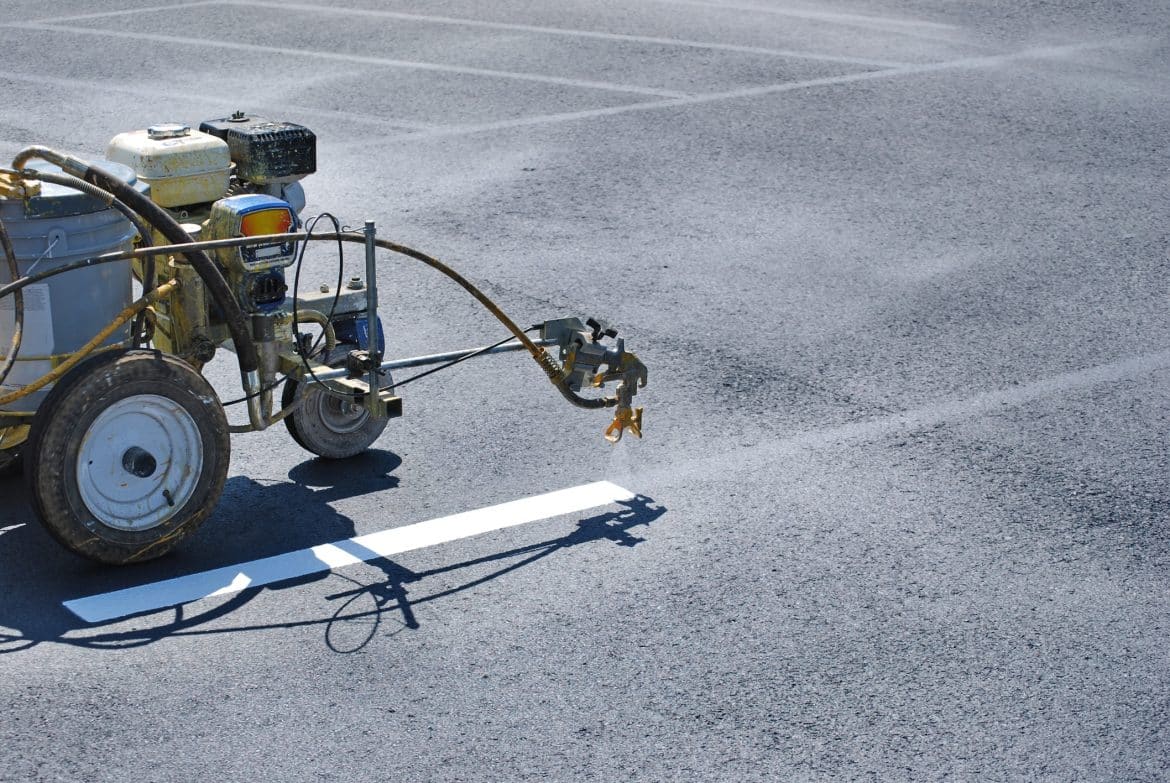In an ever-evolving urban landscape, the maintenance of parking lots extends beyond mere aesthetics to encompass safety, regulatory compliance, and environmental stewardship.
At the heart of this maintenance lies the critical task of managing parking lot striping, which, if neglected, can lead to navigational hazards and diminished curb appeal. Professional parking lot striping contractors offer indispensable services, ensuring these spaces remain safe, functional, and visually appealing.
This article looks deeper into the intricacies of parking lot striping maintenance and reapplication, highlighting the lifecycle of parking lot markings, effective maintenance strategies, the significance of using environmentally friendly materials, the process of selecting reputable service providers, and the importance of regular inspections and updates for sustained parking lot integrity.
The Lifecycle of Parking Lot Markings and When to Refresh
The lifecycle of a carpark paint is a dynamic process deeply influenced by the area’s daily operational activities and geographical context. In bustling urban environments or regions prone to severe weather conditions, the wear on parking lot marks can be accelerated, necessitating more frequent maintenance schedules.
Advanced planning for the reapplication of markings can prevent potential hazards and ensure that it remains a well-organized, safe environment for users. Moreover, employing reflective paint for striping can enhance nighttime visibility, significantly improving safety for drivers and pedestrians.
The decision to refresh should also consider upcoming events or peak business seasons, ensuring the parking lot is in optimal condition when traffic volume increases. This strategic approach to maintaining the paint not only upholds safety standards but also reinforces the positive image of the facility it serves.
Maintenance Tips to Extend the Life of Your Striping
Beyond the essential maintenance practices, understanding the specific needs of different areas within a parking lot can lead to more targeted care strategies.
For example, loading zones or areas with high turning volumes exhibit quicker wear and may benefit from more durable materials or additional protective layers. Implementing traffic control measures during maintenance activities can minimize disruption and ensure the safety of both the workers and parking lot users.
Furthermore, scheduling maintenance during off-peak hours can reduce the impact on parking availability and business operations. By adopting a holistic view of car park upkeep, facilities can ensure their striping remains vibrant and functional, enhancing the overall user experience and extending the lifespan of the markings.
Striping Materials and Best Practices for Sustainability
In addition to selecting low-VOC or VOC-free striping materials, businesses can adopt other eco-friendly practices to reduce further the environmental impact of their upkeep activities. For instance, choosing materials with a longer lifespan decreases the frequency of reapplications, lowering the overall resource consumption and emissions associated with maintenance processes.
Recycling or properly disposing of old striping materials can also mitigate environmental harm. Furthermore, consulting with environmental experts or sustainability-focused car park painting contractors can provide valuable insights into innovative practices and materials that further align with ecological goals.
By integrating sustainability into its upkeep, businesses contribute to the planet’s health and align with the growing people’s preference for environmentally responsible practices.
Hiring Reputable Service Providers
The expertise and reliability of parking lot striping contractors selected for the job directly influence the quality of the outcomes achieved. Reputable service providers bring a wealth of experience, comprehensive knowledge of regulatory requirements, and a commitment to using high-quality materials.
To identify such providers, businesses should conduct thorough research, examine the contractor’s portfolio, solicit references, and verify professional credentials. Engaging a trustworthy contractor ensures the striping work is executed to high standards and provides access to expert guidance on maintenance practices and sustainability considerations.
Importance of Regular Inspections and Updates
Regular inspections of car park markings are vital for maintaining the functionality and visual appeal of the space. Hiring professionals for these inspections ensures that trained eyes detect signs of wear, fading, and other issues early on, allowing for timely interventions to prevent minor problems from escalating.
These professionals identify issues and have the expertise to efficiently carry out routine cleaning, repair work, and layout updates. By entrusting the maintenance to skilled professionals, car park managers can ensure that the space adapts to evolving usage patterns and remains compliant with safety standards.
Hiring professionals aid in budget planning for maintenance activities, such as striping reapplications, which are crucial for preserving the parking lot’s structural and visual integrity over time. With professional guidance, managers can allocate resources effectively, lowering the need for costly repairs and improving overall safety and usability.
Conclusion
Car park care, with a particular focus on striping upkeep, is a multifaceted endeavor that demands attention to detail, an understanding of environmental impacts, and a commitment to safety and regulatory compliance.
Through informed management of the parking lot striping lifecycle, adherence to proactive maintenance tips, utilization of sustainable materials, engagement with reputable contractors, and regular inspections, businesses can ensure their parking lots serve as safe, compliant, and attractive spaces.
This comprehensive approach enhances the immediate environment and contributes to the broader goal of fostering navigable, aesthetically pleasing urban spaces that reflect well on the entities they serve.

